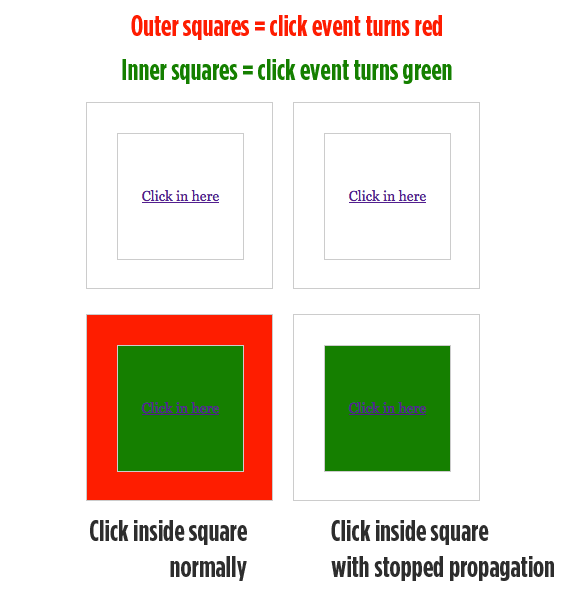return false;和e.preventDefault();的区别 |
|
Have you ever seen those two things (in the title) being used in jQuery? Here is a simple example: 复制代码 代码如下: $("a").click(function() { $("body").append($(this).attr("href")); return false; } That code would append the href attribute as text to the body every time a link was clicked but not actually go to that link. The return false; part of that code prevents the browser from performing the default action for that link. That exact thing could be written like this: 复制代码 代码如下: $("a").click(function(e) { $("body").append($(this).attr("href")); e.preventDefault(); } So whats the difference? The difference is that return false; takes things a bit further in that it also prevents that event from propagating (or “bubbling up”) the DOM. The you-may-not-know-this bit is that whenever an event happens on an element, that event is triggered on every single parent element as well. So lets say you have a box inside a box. Both boxes have click events on them. Click on the inner box, a click will trigger on the outer box too, unless you prevent propagation. Like this:  演示地址:http://css-tricks.com/examples/ReturnFalse/ So in other words: 复制代码 代码如下: function() { return false; } // IS EQUAL TO function(e) { e.preventDefault(); e.stopPropagation(); } Its all probably a lot more complicated than this and articles like this probably explain it all a lot better. 参考: 1.The difference between ‘return false; and ‘e.preventDefault(); |